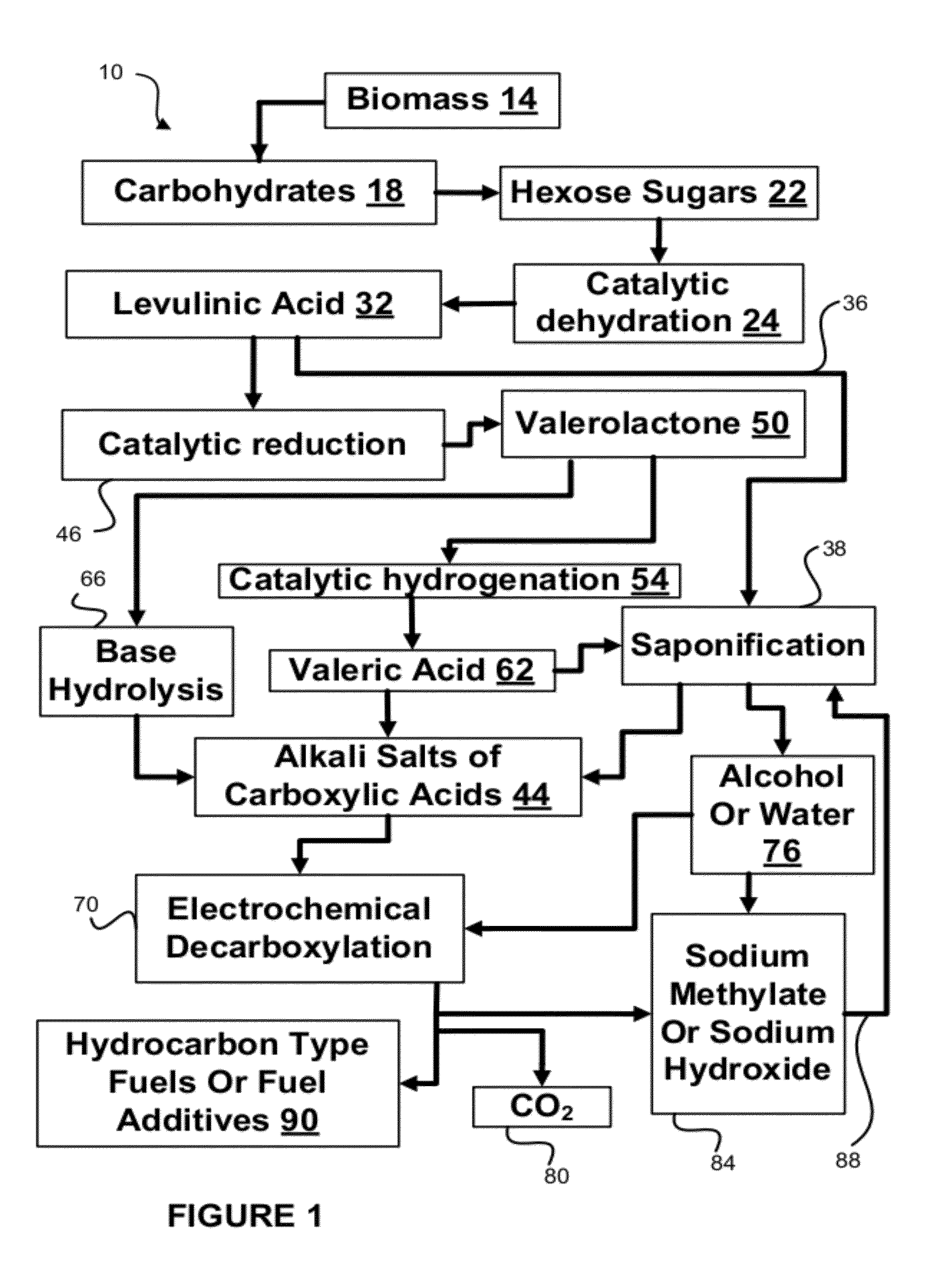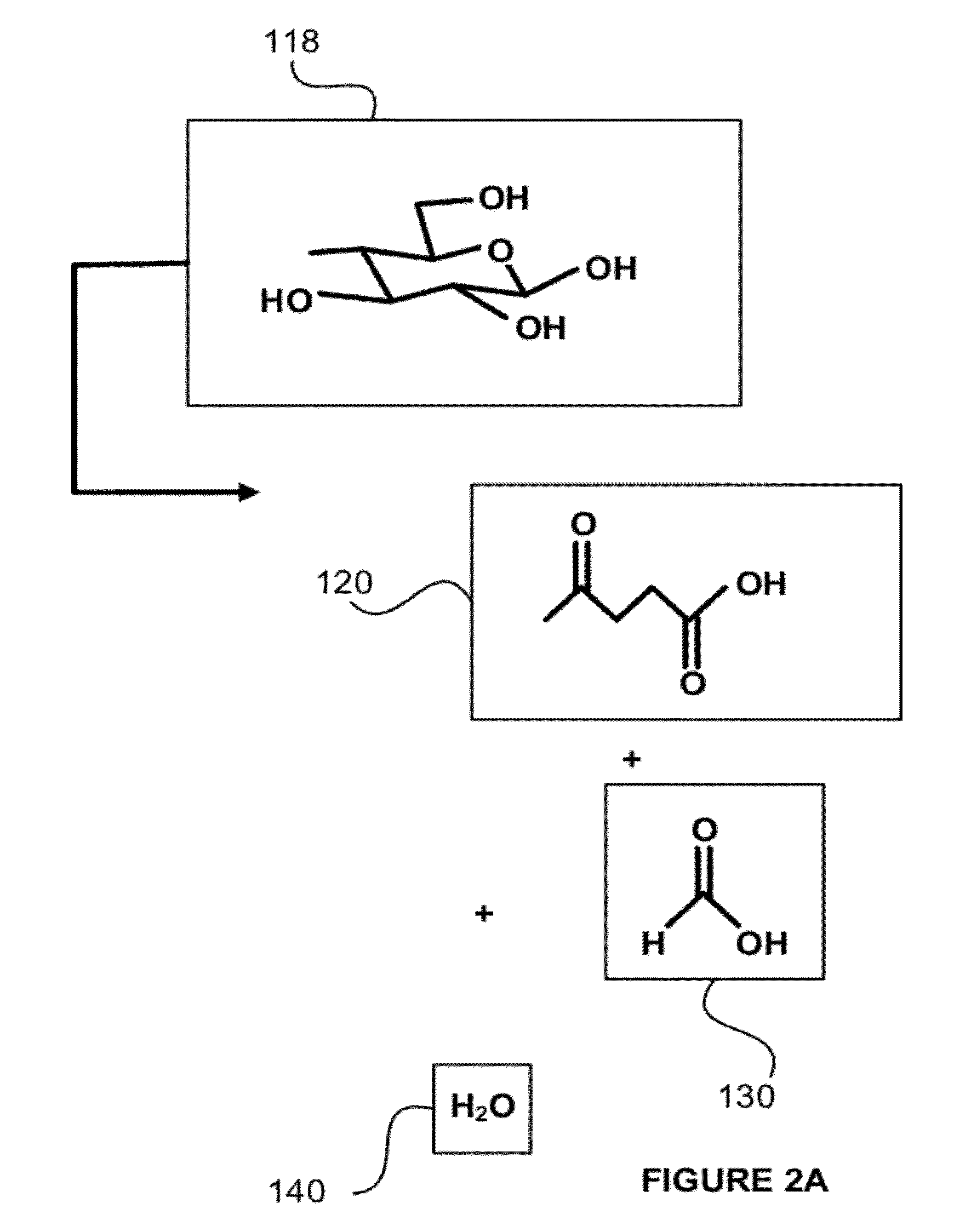Production of fuel from chemicals derived from biomass
a technology of biomass and fuel, which is applied in the direction of carboxylic compound preparation, carbonyl compound preparation, electrolytic organic production, etc., can solve the problems of high cost of hydrocarbon production and high cost of hydrocarbon decarboxylation process
- Summary
- Abstract
- Description
- Claims
- Application Information
AI Technical Summary
Problems solved by technology
Method used
Image
Examples
examples
[0084]Tests were run in order to test the decarboxylation of products. In order to perform this testing, an electrochemical cell was prepared. This cell consisted of a two compartment electrochemical cell with minimal membrane-anode gap. The minimal gap is necessary for creating optimum mass transfer conditions in the anolyte compartment. A smooth platinum anode was used where decarboxylation occurs. A 1″ (one inch) diameter and 1 mm thick NaSICON ceramic membrane was used between the anode and cathode compartment. The NaSICON membrane was obtained from the Ceramatec company of Salt Lake City, Utah. A nickel cathode was used in the cathode compartment.
[0085]The test set up consisted of 1 liter glass flasks sealed with 3 holed rubber stoppers as anolyte and catholyte reservoirs. Each reservoir was placed on a hot plate and thermocouples were placed in each of the reservoirs. About 300 mL of anolyte (18.6% (wt / wt) sodium levulinate in methanol) and catholyte (15 wt. % aqueous NaOH) we...
PUM
| Property | Measurement | Unit |
|---|---|---|
| alkali ion conducting | aaaaa | aaaaa |
| soluble | aaaaa | aaaaa |
| chemical structure | aaaaa | aaaaa |
Abstract
Description
Claims
Application Information
 Login to View More
Login to View More - R&D
- Intellectual Property
- Life Sciences
- Materials
- Tech Scout
- Unparalleled Data Quality
- Higher Quality Content
- 60% Fewer Hallucinations
Browse by: Latest US Patents, China's latest patents, Technical Efficacy Thesaurus, Application Domain, Technology Topic, Popular Technical Reports.
© 2025 PatSnap. All rights reserved.Legal|Privacy policy|Modern Slavery Act Transparency Statement|Sitemap|About US| Contact US: help@patsnap.com



